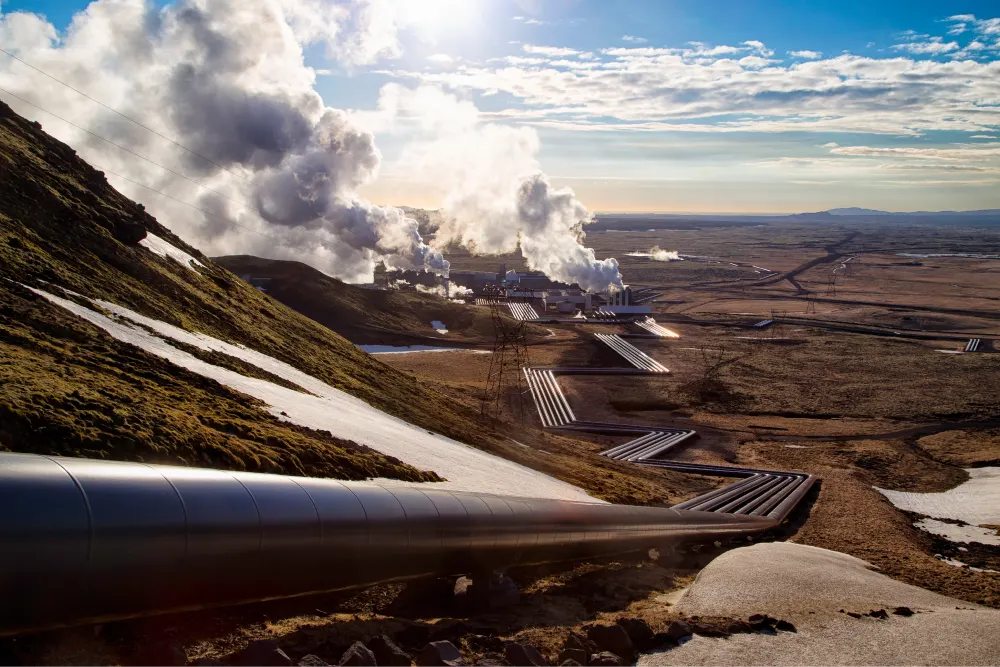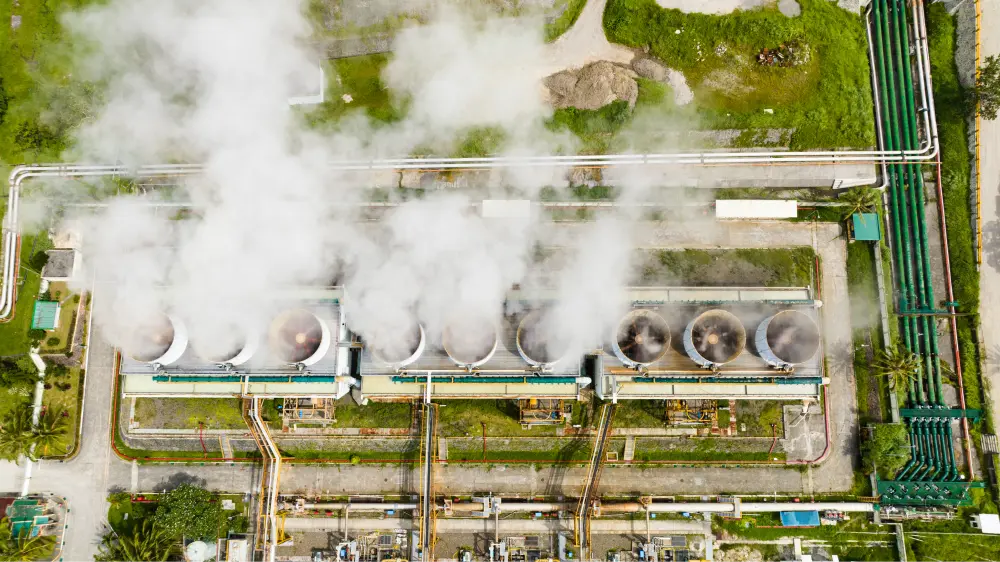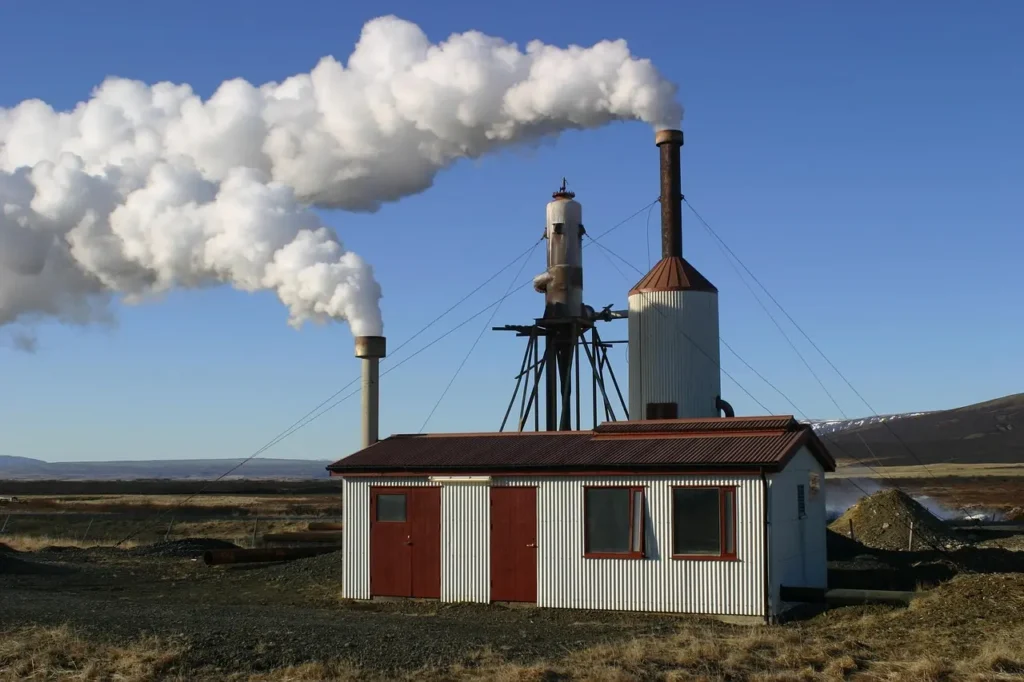How Many Geothermal Power Plants in Texas?
3 minute readAnalysis of geothermal development in Texas through 2025. From pilot projects to legislative trends and future potential.
Home > Learning Center > Pros and Cons of Geothermal Energy
4 minute read • Last update November 2024

| Pros of geothermal energy | Cons of geothermal energy |
|---|---|
| Renewable and sustainable | High initial costs |
| Very low pollution and carbon emissions | Location-specific |
| Consistent and stable source of energy | Drilling may lead to environmental contamination |
| Relatively small land footprint | Relatively limited scalability |
| Long-term cost efficiency and effectiveness | Noise and visual impact |
| Several uses and applications | Drilling and fluid injection may cause small earthquakes |
| Encourages energy independence | Limited public awareness |
| Can be decentralized | High exploration costs |
| Job creation | Potential for resource usage conflicts |
| High initial costs can be reduced with the use of decommissioned oil wells | Potential release of hazardous gases |
Geothermal energy is both renewable and sustainable. It relies on heat from the Earth’s core, which is inexhaustible on a human timescale. We cannot run out of geothermal energy in the same way that there is potential to run out of easily and financially accessible fossil fuel sources like coal, oil, and natural gas.
Geothermal is a very clean source of energy. According to the Energy Information Administration, geothermal power plants emit 97% less acid rain-causing sulphur compounds and nearly 99% less carbon dioxide than fossil fuel power plants.
The Earth’s core is always generating heat, meaning geothermal power plants can provide consistent and stable electricity production. This stands in contrast to other renewable sources like wind and solar which rely on wind and sunlight to generate power.
Compared to other energy sources, geothermal has a smaller land footprint. According to a study that compared the land use intensities of nine different sources of energy (wind, photovoltaic solar, concentrated solar, geothermal, nuclear, coal, natural gas, hydroelectric, and biomass), geothermal was the second least land-intensive.
Geothermal plants can sustain operation for 30-50 years or longer. This is a rather favorable comparison to other power plants such as:
While geothermal plants can have high upfront costs, there longevity, durability, and capability to generate energy at very low costs makes it a very attractive source for power.
One of the most intriguing benefits of geothermal energy is its wide range of applications. In addition to generating electricity, geothermal can be used for heating and cooling buildings.
Like all domestic sources of energy, geothermal utilized within the United States can limit the need to import fuels from other nations.
Depending on where your home is located, small-scale geothermal systems can be implemented that allow for energy dependence at the household level.
Compared to other realms of the energy sector, geothermal has a long way to go in terms of jobs created. Because there is such large potential to expand our use of geothermal in the United States, there are many more jobs to be made along the way.
Exploration for sources of geothermal can be very expensive. Fortunately, decommissioned oil wells that are already well-known as sources of geothermal energy can be repurposed. This can help reduce the high initial cost of developing new geothermal energy plants.
After a geothermal plant is operational, they are quite cost-efficient. However, the upfront costs are limiting the expansion of this renewable source of energy. A report released by the National Renewable Energy Laboratory specifically cites the high cost of drilling as a barrier to the development of additional geothermal resources.
There are specific locations around the globe that have easy access to geothermal energy resources. Typically, they center around major tectonic plate boundaries. In these areas it’s common to find volcanoes, hot springs, and geysers.
The location-specific nature of geothermal makes it cost-prohibitive or impossible in certain parts of the globe.
Drilling and fluid injection deep beneath the earth for geothermal energy systems can lead to the discharge of dissolved solids that can contaminate local water supply and ecosystems. These harmful materials include sulfur, chlorides, silica compounds, vanadium, arsenic, mercury, nickel, and other various toxic heavy metals.
Because only certain areas are suitable for geothermal activity and the development of geothermal energy systems, especially at the scale needed to contribute value to utility grid, geothermal energy is not as scalable as other options for electricity generation.
According to the Environmental and Energy Study Institute, the construction of geothermal power plants is a loud process. This can be potentially disruptive to people or animals who live nearby.
Drilling down to the energy source for a new geothermal energy plant, as well as the fluid injection required for their ongoing operation, can lead to small earthquakes near the power plant. These are to be expected and generally go unnoticed by the people in the area and do not harm the plant or its ability to operate. Experts are working to prevent instances of larger, damaging earthquakes. In the decades-long history of geothermal energy production, there have been very few major earthquakes that have led caused any damage as a result.
Geothermal energy has been in use for decades, but it is much less popular than it’s wind, solar, hydro, and fossil fuel counterparts. The lack of public knowledge and interest may be a hindrance to the development of additional resources.
After a geothermal plant is operational, they are quite cost efficient. However, the upfront costs A report released by the National Renewable Energy Laboratory
Areas with abundant geothermal energy are often valuable for other reasons beyond their potential use as a source of energy. Some locations with geothermic activity are renowned for their natural beauty, archaeological, or social impacts. Here are some examples:
The Sierra Club, an environmental non-profit organization, expresses the importance of “planning and zoning” to resolve land-use conflicts.
According to the U.S. Fish & Wildlife Service, the steam vented at the surface from geothermal energy plants and systems may contain harmful gases such as hydrogen sulfide, ammonia, methane, and carbon dioxide. Methane and carbon dioxide are harmful greenhouse gases. Hydrogen sulfide is a highly flammable and explosive gas that can cause life-threatening situations when handled improperly.
Fortunately, as mentioned above, geothermal power plants can be set up to reduce the harm from these gases.
Graham Lumley, Digital Marketing Manager at BKV Energy, leads digital and traditional marketing strategies, focusing on educating Texans about the state's deregulated energy market. With over 8 years of marketing experience, he creates content to help consumers understand and save on their energy bills, bringing a fresh and dynamic approach to the industry.

Analysis of geothermal development in Texas through 2025. From pilot projects to legislative trends and future potential.

Uncover the environmental impact of geothermal energy, from low emissions to pollution risks and seismic concerns. Learn how geothermal stacks up as a clean energy source.
Get $50 off your electric bill!
Use code BKVEJOINUS50
Enter your zip code to shop BKV Energy's affordable, fixed-rate Texas electricity plans. Use the promo code for $50 off your electric bill.